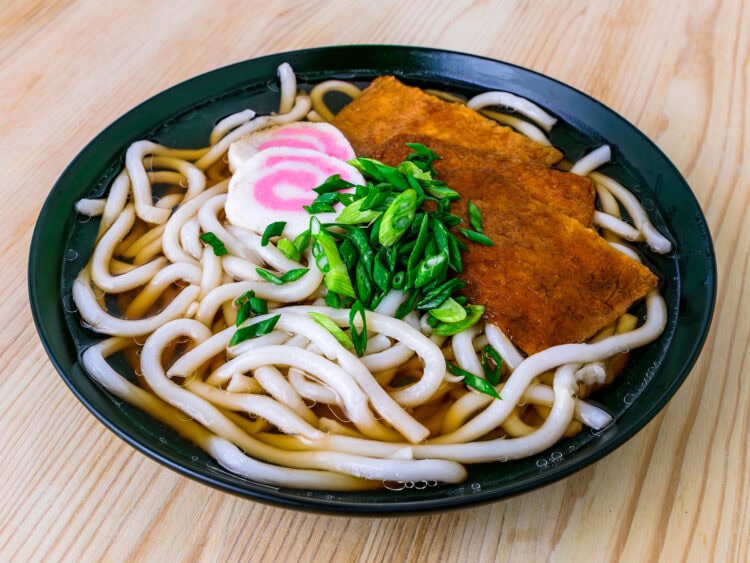A quick and effective udon noodle soup for fans of Japanese-style garnished broths!
In the world of noodles, Kitsune udon is one of those ultra-comforting dishes that blend a whole range of flavors and ingredients typical of the Land of the Rising Sun. Treat yourself to one of these great classics of Japanese cuisine!
What is Kitsune udon?
Kitsune udon is an exceptional dish in Japan, where it is very popular… And for good reason! Essentially, you’re dealing with a soup of thick and soft udon noodles in a dashi broth. It’s usually garnished with fried tofu (called “aburaage”) seasoned with soy sauce and mirin, thinly sliced narutomaki, and green onions.
Fans of soups and broths like ramen, consider yourselves warned. They are often served hot, but can also be consumed cold in summer. In short, it’s a rich and delicious dish combining the softness of the noodles with the gentleness of the broth and fried tofu.
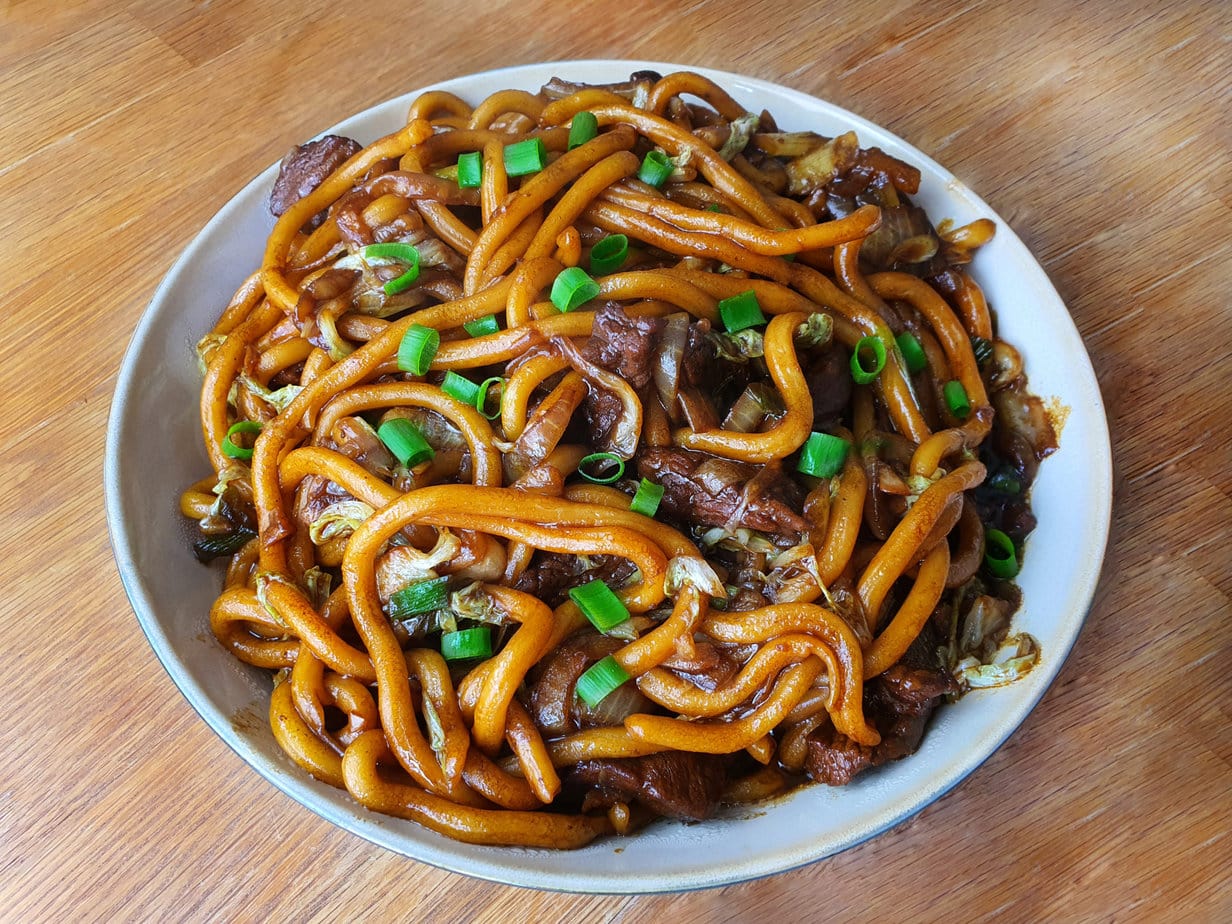
The Japanese being strong in culture and traditions, you’re probably wondering about the meaning of the term “kitsune”. It literally means “fox”. But then, why this specific reference, you might ask? There are several theories explaining this. One of them says that fried tofu is often considered the fox’s favorite food in Japanese folk tales.
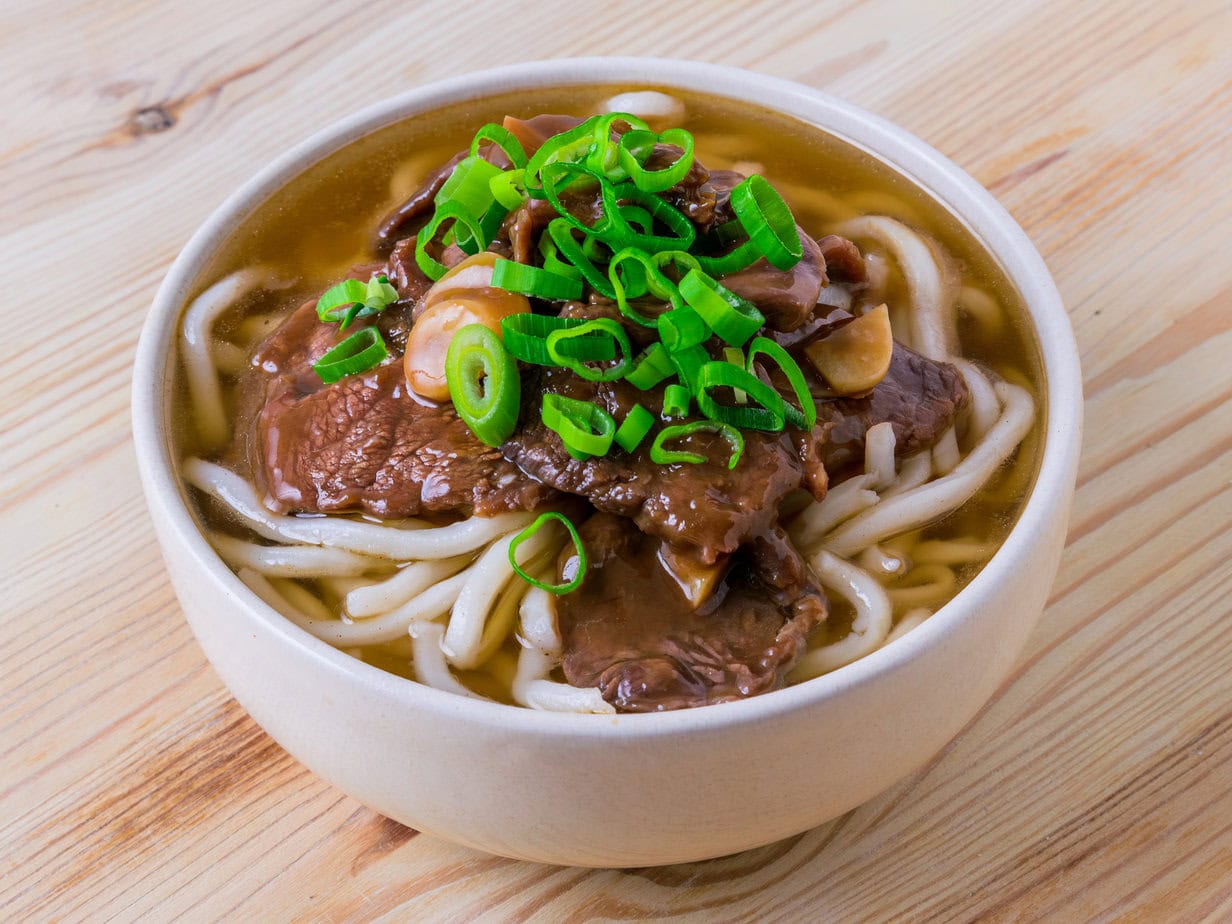
Another theory states that the color of fried tofu significantly resembles that of a fox’s fur. In fact, in many literally translated Japanese recipes, they say ‘cook until fox color’ to mean ‘cook until golden brown’. Far-fetched, perhaps, but these are indeed the anecdotes associated with Kitsune udon.

Where does Kitsune udon come from?
It’s said that Kitsune udon originated in Osaka in 1893, during the Meiji period. In a store specializing in udon, originally called “Mastubaya”, a customer reportedly placed a piece of aburaage served as a side dish on plain udon and appreciated the combination of the two ingredients. That’s how it all started.
As Osaka residents are particularly proud of their rich broth and konamon (flour-based food) culture, Kitsune udon perfectly represents the local know-how by combining these two elements.
Main ingredients of Kitsune udon
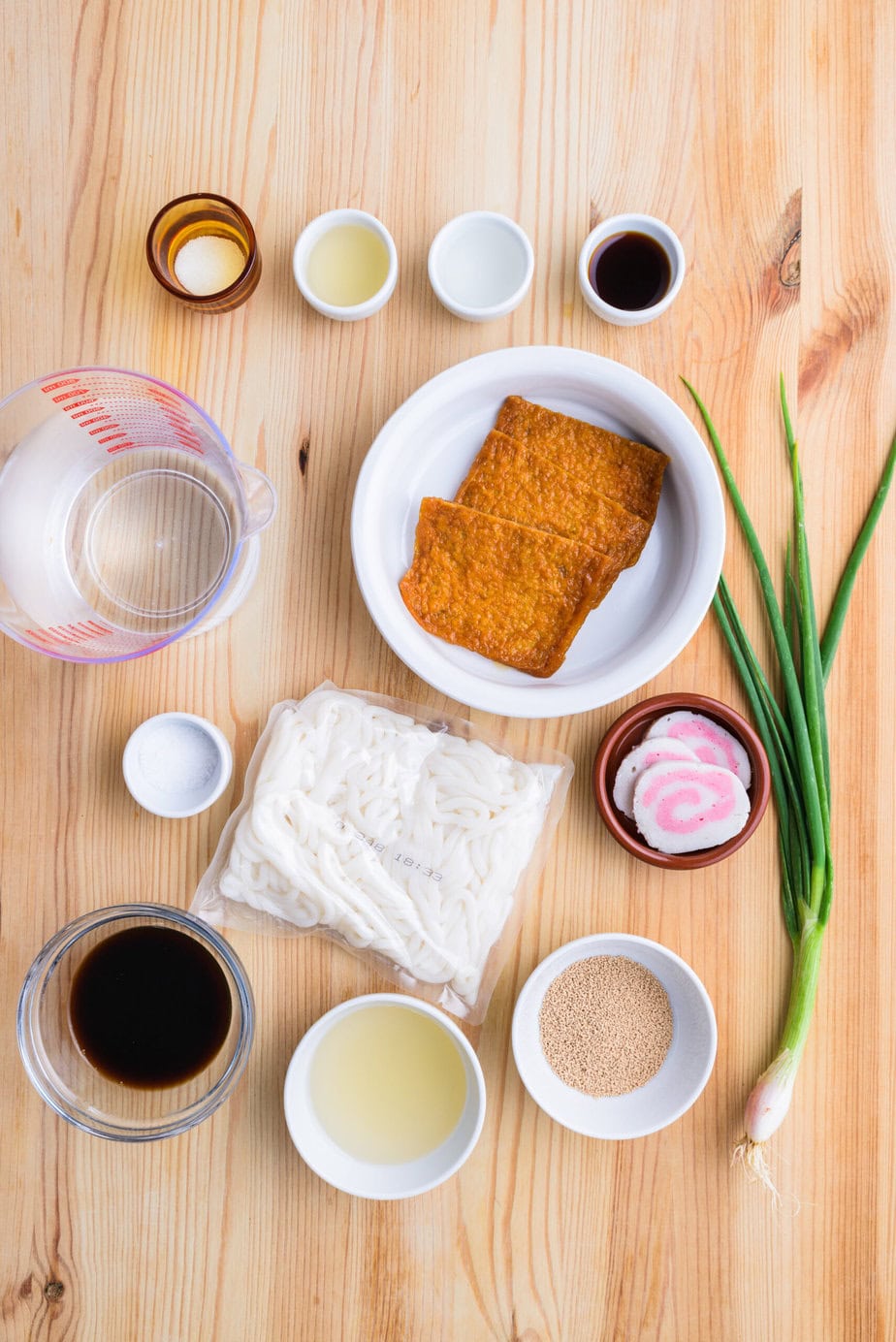
The Dashi: “This is the very base of the soup in which the noodles will be immersed. Dashi is a typically Japanese element with umami flavor that” is often used in the preparation of soups, including the famous Miso soup! We’re dealing with subtle flavors, opposite to Korean kimchi jjigae, for example
The udon noodles: Essential for this recipe. In addition to being versatile and adaptable to a good number of dishes, we particularly love them for their thickness and texture that ensure all the gourmet aspect of this recipe. To understand their assets and differences well, I invite you to consult my guide to Asian noodles.
The fried tofu: In most recipes, it’s called “aburaage”. These are ready-to-use fried tofu pouches, but it’s almost easier to make it yourself because aburaage is often difficult to find. It’s not rocket science, the seasoning is simply composed of light soy sauce, mirin, sake, and sugar, I’ll detail it all in the recipe.
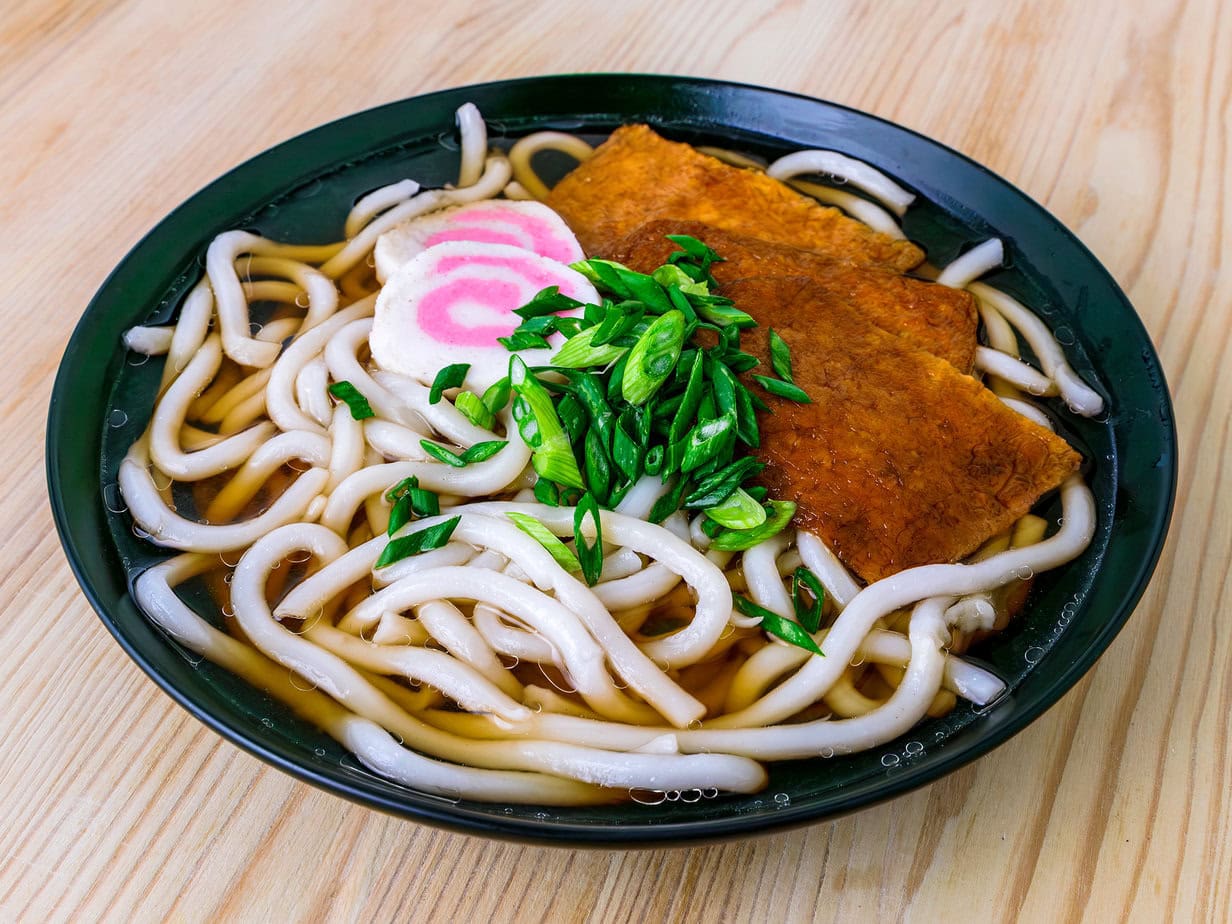
Authentic Kitsune Udon
Ingredients
- 300 g of udon noodles precooked
Soup Base
- 2.5 tablespoons of mirin
- 2 tablespoons light soy sauce
- 1 packet of dashi powdered (or homemade, using the same amount as the water described below)
- 1 pinch salt
- 600 ml water
Seasoned Fried Tofu
- 3 pieces of thin fried tofu
Seasoning for Seasoned Fried Tofu
- 150 ml water
- 1 tablespoon light soy sauce
- 1.5 tablespoon of mirin
- 1.5 tablespoon of sake
- 1 teaspoon of sugar
Toppings (optional)
- Narutomaki thinly sliced
- green onions chopped
Instructions
Soup Base
- add water and powdered dashi to a saucepan. Bring to a boil, then lower the heat and let it infuse for 4 minutes.1 packet of dashi, 600 ml water
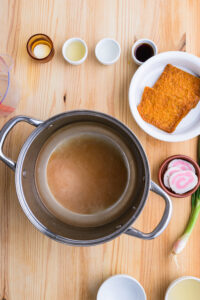
- Add salt, soy sauce, and mirin.2.5 tablespoons of mirin, 1 pinch salt, 2 tablespoons light soy sauce
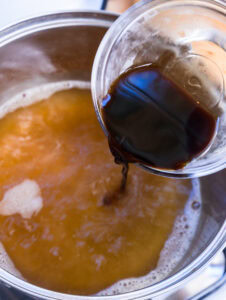
- Bring back to a boil then remove from heat. Taste and add more salt if necessary.
- Boil the precooked udon noodles according to the package instructions300 g of udon noodles
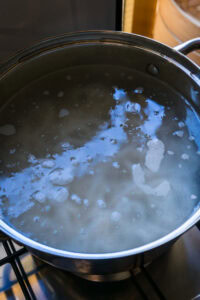
- Rinse the noodles under the tap after cooking and drain. Serve in a soup bowl.
Seasoned Fried Tofu
- Remove excess oil from the fried tofu by pressing it with paper towels. In a saucepan, place the fried tofu and seasonings.3 pieces of thin fried tofu, 150 ml water, 1 tablespoon light soy sauce, 1.5 tablespoon of mirin, 1.5 tablespoon of sake, 1 teaspoon of sugar
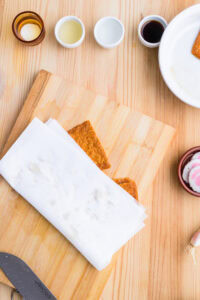
- Simmer on low heat until all the liquid has evaporated.
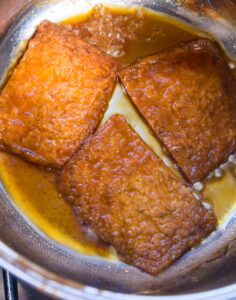
Assembly
- Pour the hot soup over the udon noodles.
- Add the seasoned fried tofu, narutomaki toppings, and green onions on topNarutomaki, green onions
